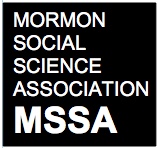The Mormon Social Science Association welcomes presenters and guests to our One-Day Conference at Utah Tech University in St. George, Utah. Paper presentation sessions will be followed by Q&A conversations.
Utah Tech University Campus Map
Session 1: 1-2:15 PM
College of Education Building (COE), room 121
Unpacking Utah Stereotypes: Religion, Region, and Subculture
Ryan T. Cragun (University of Tampa), Bethany Gull (Utah Tech University), Michael Nielsen (Georgia Southern University), Rick Phillips (University of North Florida) and Jesse Smith (Western Michigan University)
LGBTQ+ Experiences with Community Belonging in Southern Utah
Carmyn Hardisty (Utah Tech University)
Exploring the Formation of the Fundamentalist Movement through Family History
Laird P. Naylor
Followed by Q+A
Session 2: 2:30-3:45 PM
College of Education Building (COE), room 121
Mormon Barbie: A Critical Examination of the Male Gaze, Ideology and Parallel Representations
Sherrie Gavin (University of New England, Australia)
Modern Mormon Women as Global Change Agents
Warner Woodworth (University of Utah)
“‘You might change your mind!’: Early Responses to Women’s Ordination in the 1980s RLDS Church
Nancy Ross (Utah Tech University) and David Howlett (Smith College)
Followed by Q+A
Dinner together: 5:00 PM TBD










